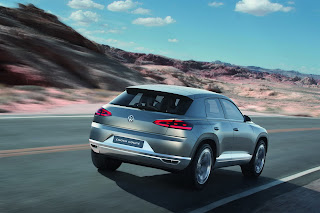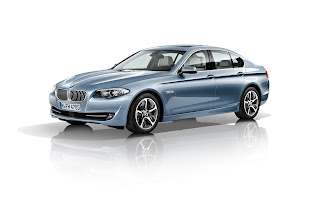The German automaker says that concept is a study for a potential new CC-style SUV that "hints at how a crossover between a four-door coupé and an SUV could look like" -think small BMW X6- while also previewing an evolved form of VW's current design language.
The concept is the first VW model based on the company’s new ‘modular transverse matrix’ or MQB platform architecture to be shown to the public. The MQB chassis will be used in a number of VW Group models ranging from the next Golf to the Audi TT's successor.
At 4,345 mm (171.0-in.) long, 1,868 mm (73.5-in.) wide and 1,523 mm (59.9-in.) tall, the Cross Coupé fits exactly in between the current Golf hatchback and the Tiguan SUV in size. However, it's 2,630 mm (103.5-in.) wheelbase is 52 mm longer than the Golf and 26 mm longer than the Tiguan, which not only gives it a more dynamic appearance, but also helps improve interior space.
VW says that despite its sporty looks, the Cross Coupé is also a capable off-roader model boasting a 24.2-degree angle of approach and 32.5-degree angle of departure.
The four-seat Cross Coupé features a hybrid powertrain that links a TSI direct injection turbo petrol engine to two electric motors, one located at the front and the other at the rear, which produce 54HP (40 kW) / 180 Nm of torque and 114HP (85 kW) / 270 Nm respectively. The hybrid system's combined output is 265-horsepower allowing the crossover model to sprint to 100km/h (62 mph) in seven seconds en route to a top speed of 201km/h (125 mph).
VW says the concept can travel up to 40 kilometers (25 miles) on purely electric power.
The Cross Coupé also features an innovative all-wheel drive system with an ‘electric drive shaft’, in which the rear axle is driven by the rear electric motor. "In this situation power is supplied to the rear electric motor by the one at the front, which during this phase acts as a generator powered by the TSI engine," says Volkswagen.
The elimination of the conventional drive shaft allowed VW to place the SUV's battery package in the central tunnel thus saving space and allowing for a low center of gravity and a balanced spread of axle loading.












































































